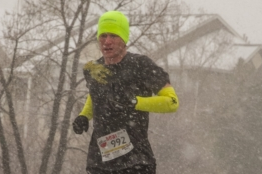The latter part of 2019 saw several big changes in the distance running world that signal a new era approaching.
For US distance running, Shalane Flanagan’s retirement leaves a void on the women’s side that will be difficult to fill. Though, as mentioned in a prior post, the U.S. women are in a current surge, she won the New York Marathon in 2017 against arguably the greatest marathoner at that time and has been a stalwart on the distance scene for years. With the talent that remains, the US women are well-positioned but she was a standard-bearer.
Alberto Salazar’s suspension left two of the United States’ biggest stars, Galen Rupp and Jordan Hasay, looking for new coaches this fall. Since the 2012 Olympics, for US men’s running it has been Rupp and then everyone else, at least as it related to elite international podium finishes. Hasay has always held much promise and delivered at times, but how both respond, especially after having dealt with recent injuries, will shape the US running scene dramatically.
Mo Farah hoped to transition to dominance on the marathon stage but has announced he will focus on the 10000M at the Tokyo games. He is one of the greatest tactical distance runners of all time, but his success on the track combined with not posting times that will contend for London or Berlin wins may have pushed him back to the oval. Will his experience and tactical ability lead to a third gold at age 37, or will Joshua Cheptegei or someone else be at the top of the podium?
Though Kenenisa Bekele nearly broke the world marathon record after largely being written off, he has been performing at a high level for many years and even if he has a couple of big performances left in him, he is close to retirement. As seen in prior posts, his list of accomplishments is voluminous and whether a new runner will rise in his place remains to be seen.
On the elite marathon stage, Kipchoge and Brigid Kosgei took our time expectations for the 26.2 distance to new levels previously thought to be on the border of impossible. For Kipchoge, it was breaking the two-hour marathon barrier. For Kosgei, it was shattering Paula Radcliffe’s world record that stood at ninety seconds faster than any other woman. Now we see what the human body is capable of and the racing world will react.
Kosgei is young at 25, and who knows what her career will bring or how far down she can take her record-breaking run. Others will strive to keep up and continue to drive down this time. Kipchoge is 35 and thus closer to retirement but it’s not inconceivable he has several good races left. It’s exciting for both the men and women. Kosgei has inherited the mantle of ushering in the next era of elite marathon women. Kipchoge still sits firmly on top of the men’s marathon world, yet the fact the one other runner came within two seconds of his ratified world record and the second-place finisher at London this past spring hung tough with him suggests the the new wave of elite marathon men is coming. It will likely be a long time before we see someone singularly as dominant as him, but it may not be long before we see a ratified sub-two hour record.
Sometimes great feats or changes arrive in clusters and the later summer and early fall of 2019 contained both. 2020 being an Olympic year allows the possibility of the new generation of distance stars starting to shine on one of the world’s biggest running stages.

Running anecdotes, running food reviews, some race coverage, and more